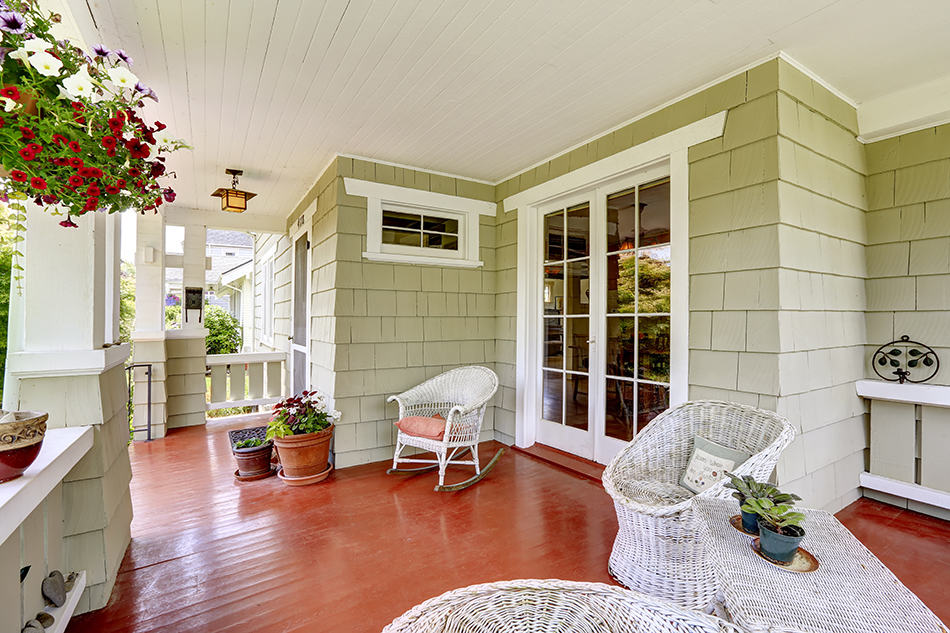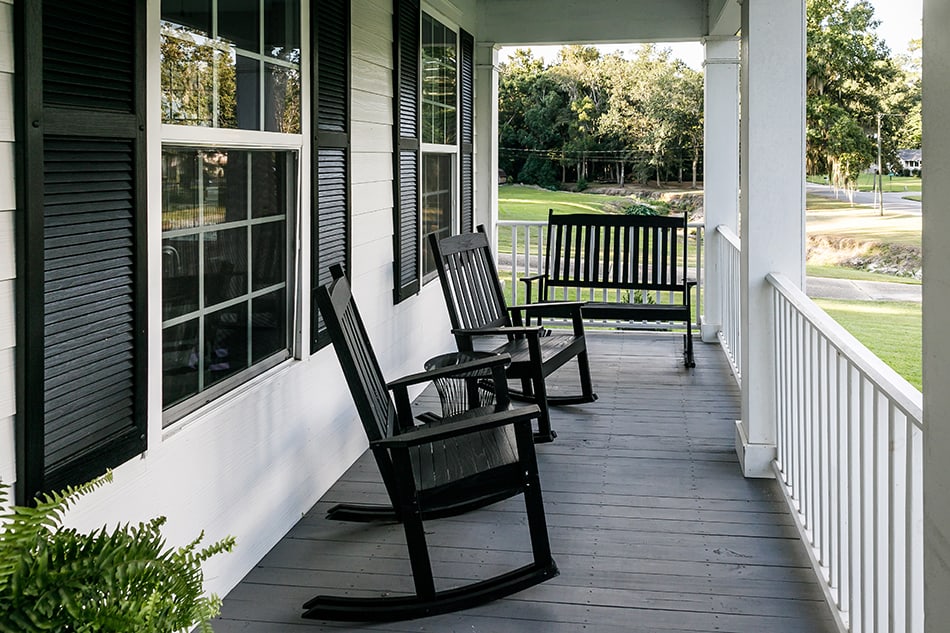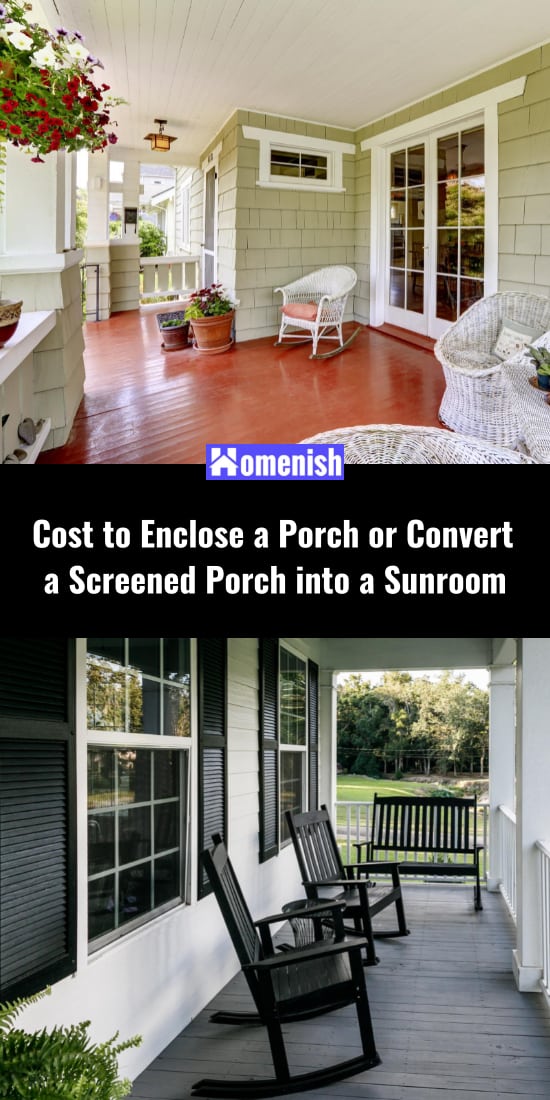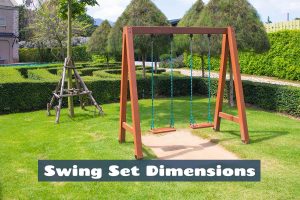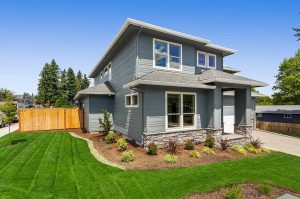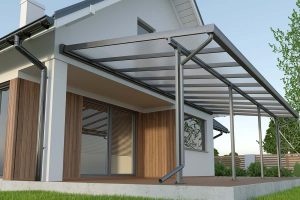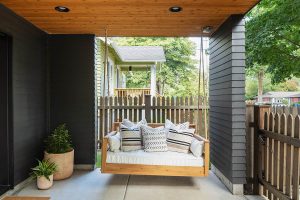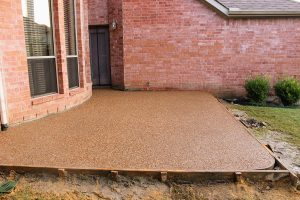You are considering enclosing your porch and wonder how much it will cost. But after some research, you found out there are other choices as well. Besides the cost of enclosing your porch, there are other questions to pinpoint. What’s better for your home, an enclosed porch or a sunroom?
Which will add more comfort and usability to your space? Which will add more value to your property? We’ll answer all of these questions in this article.
Deciding Between an Enclosed Porch and a Sun Room
Just to get our terms straight, an enclosed porch has walls and windows but probably no heating system. However, A screened-in porch doesn’t have full walls; it may have partial walls/screens or full screens attached to a wood frame. Though not offering any protection from the weather, such as the extreme winter temperature, it will keep the bugs out. Both offer an exit to the lawn or driveway.
A sunroom or sun parlor is enclosed with full walls and windows, has full heating, and may or may not exit onto the property. Assuming you have a porch large enough to convert already, a screened-in porch is the least costly, while a full sunroom is the most expensive. An enclosed porch falls between, though definitely on the cheaper side.
Which Porch to Change?
The first question is, which porch area are you considering altering? Will your enclosed porch or sunroom be in the front of the house, the back, or on the side?
Most people have two entrances to their home besides the door leading from an attached garage into the rest of the house. How do you use your entrances? You might not want to walk through your sunroom every time you come in or go out. An enclosed porch, however, can be the perfect area to remove and store shoes before entering the home.
What’s Your Preferred Level of Privacy?
What level of privacy do you desire for your new area? If it’s facing the road, traffic, and neighbors might be distracting as you sit in your sunroom or on your enclosed porch.
Which Direction Offers the Best View?
Depending on how your property is laid out, one or the other porch areas might offer you a better view than the other side. In that case, you’ll want to capitalize on the view by placing as many windows or open areas as possible facing that direction and orienting your furniture to face that way.
When Do You Want to Use the Space?
Most of us are not fortunate enough to live in areas where the temperature outside is always comfortable. So, is the sunroom or enclosed porch something you want to use all year long, or are you okay with using it only when there’s nice weather out?
Is it a place for you to go enjoy a book by yourself or an area to entertain guests? This will determine the size and type of porch you want. Also, consider if you’re the type of person to get cabin fever or depressed in the winter.
If you’re looking for some time in the sunshine, even when it’s cold out, you’ll need your room to be heated. Windows rather than a screen, insulation for the walls, and a heating system will drastically increase the cost of renovating your space.
Finally, ask yourself if you want to use the area in the early morning hours or in the evening. Both will require adding lights to the area, and if you’re adding lights, you might want to include an electrical outlet or two. That’s going to take electrical work.
Is Your Present Porch Constructed to Code?
Now that you’ve decided your preferences, it’s time to think about actually building the space. The first step is to think about the state of your current porch structure and whether you’re going to need a building permit to construct the type of area you want.
If you simply have a concrete pad or some stairs as your porch, then neither is rated to manage the weight of the brand-new area. You should begin from the ground up with a new foundation. In all likelihood, this will also allow you the chance to increase the size of your porch/sunroom.
Enclosing your existing porch won’t cost as much if it is structurally viable. A DIYer can conserve even more money by carrying out the project themselves. If a building permit was released to develop the porch, it ought to be structurally viable to accommodate additional panels. Some extra insulation and framing will be essential to develop a sun parlor but shouldn’t make it go over the safe weight limit.
If no permit includes your porch on file at the building inspector’s office, call a home inspector to check it out, particularly if you’re going to DIY the porch upgrade. If you build on an existing porch or foundation that isn’t structurally viable, it can split, break, or move.
Cost of a Screened-In Porch
Screening in a porch rather than fully enclosing it or converting it into a sunroom is the cheapest route. For this option, you’ll most likely pay less than $3,000 for a contractor to do the work – less if you do it yourself.
In general, you can plan on $3-5 per square foot for your material and $2 per sq. ft. for labor. If you have to build a new foundation, budget between $25 and $120 per sq. ft. for the whole project. The difference lies in how much you do yourself vs. paying a builder to do certain parts or all of it for you.
Estimated Cost of Screening in a 200-square-foot Porch:
- $2,400 – Average Cost
- $2,800 – High Cost
- $2,000 – Low Cost
If you want to upgrade your screened-in porch, here’s what you can expect:
- Aluminum screened-in porch expense: $5-7 per sq. ft., with $2 per sq. ft. for labor
- Solar Screens: Starting at $5.50-7 per sq. ft. with labor
- Fiberglass: $4.50-5.50 per sq. ft. with setup
- Retractable motorized screens: $2,000-4,000 per screen. Harder to approximate per sq. ft.
If you’d rather fully enclose your porch or build a sunroom, the costs will rise dramatically because you’ll be paying for more and different materials, such as insulation, windows rather than screens, the cost of erecting walls, possibly adding electricity and carpet, etc.
Is it Cheaper to Turn a Porch Into a Sunroom or Enclose It?
Getting innovative with your home can range from a basic screened porch to an extravagant sun parlor.
Making improvements to your house is one method to increase the worth of your residential or commercial property and make it a better financial investment for the future.
Aesthetic appeal and roomy yards are significant attractions to potential property buyers, and updating your porch to end up being a sun parlor or enclosing it will increase the worth of your house. Which path offers you the biggest bang for your buck, and which will pay off more in the long run?
Transforming a porch costs $5-7 per sq. ft. for the walls, plus between $5 and $22 per sq. ft. for the cover or roof.
In addition to increasing the worth of your house, turning a porch into a sun parlor adds a living area and sq. ft. to the home. You can include this in your real estate listing; but beware that adding living space to your home will also increase your taxes!
Because sun parlors have numerous windows, you’ll want to make sure rainwater is diverted away from the home. If the flooring in your porch slopes, you’ll have to choose whether you’re going to keep the slope or raise the flooring joists.
It can cost between $300 and $400 per sq. ft. to transform a porch into a sun parlor. Anticipate paying at least 30 percent more if you opt to transform your porch into a sun parlor rather than an enclosed porch.
Worth in the Long Run
Sun parlors will hold around a 72 percent return in resale worth, so no, it will pay for itself when you go to sell. In this sense, it’s a bad investment.
Enclosed porches do better as potential buyers see the opportunity to build a sunroom themselves without fully taking into account the cost of doing so. Still, they are more expensive to build than a screened porch, so the return isn’t as high as your final option.
Screened-in porches provide the best return on investment because they do not cost as much to build and add high appeal to a home vs. a plain concrete slab. Parents see the opportunity to let their children play on the porch without the fear of them wandering off.
All of these options provide even higher returns if you do the work yourself rather than paying a contractor. You’ll have lower expenses at the outset and the same value when you sell, giving a larger reward for the project.
Of course, return on investment is not the only factor in deciding between these three options. You also need to consider the enjoyment you’re going to receive from the space.
Perhaps you don’t plan on moving any time soon, so the time you’ll get to spend in your sunroom is worth the poor returns. Maybe you want to improve your porch for your own satisfaction but don’t have the budget to create a full sun parlor. Whatever improvement you make will be worth it to you in some way.
